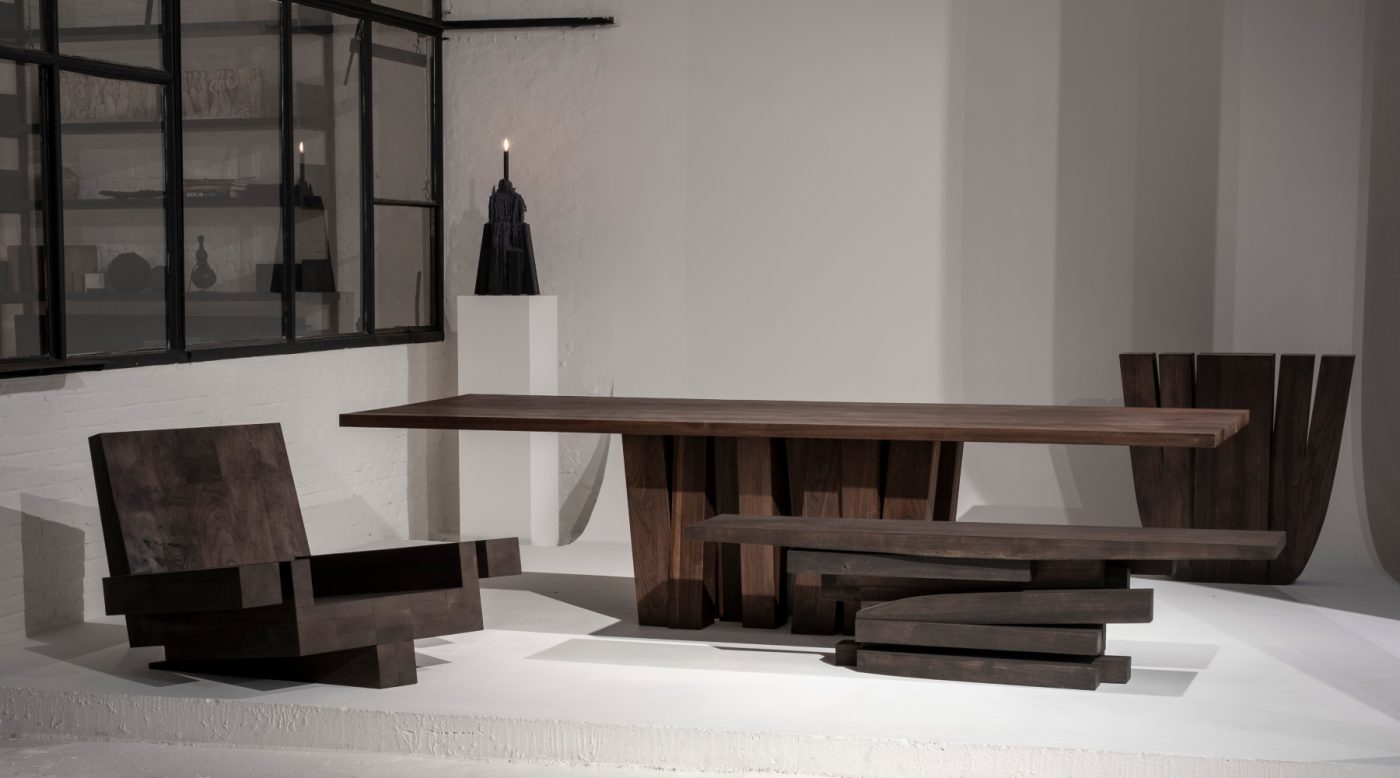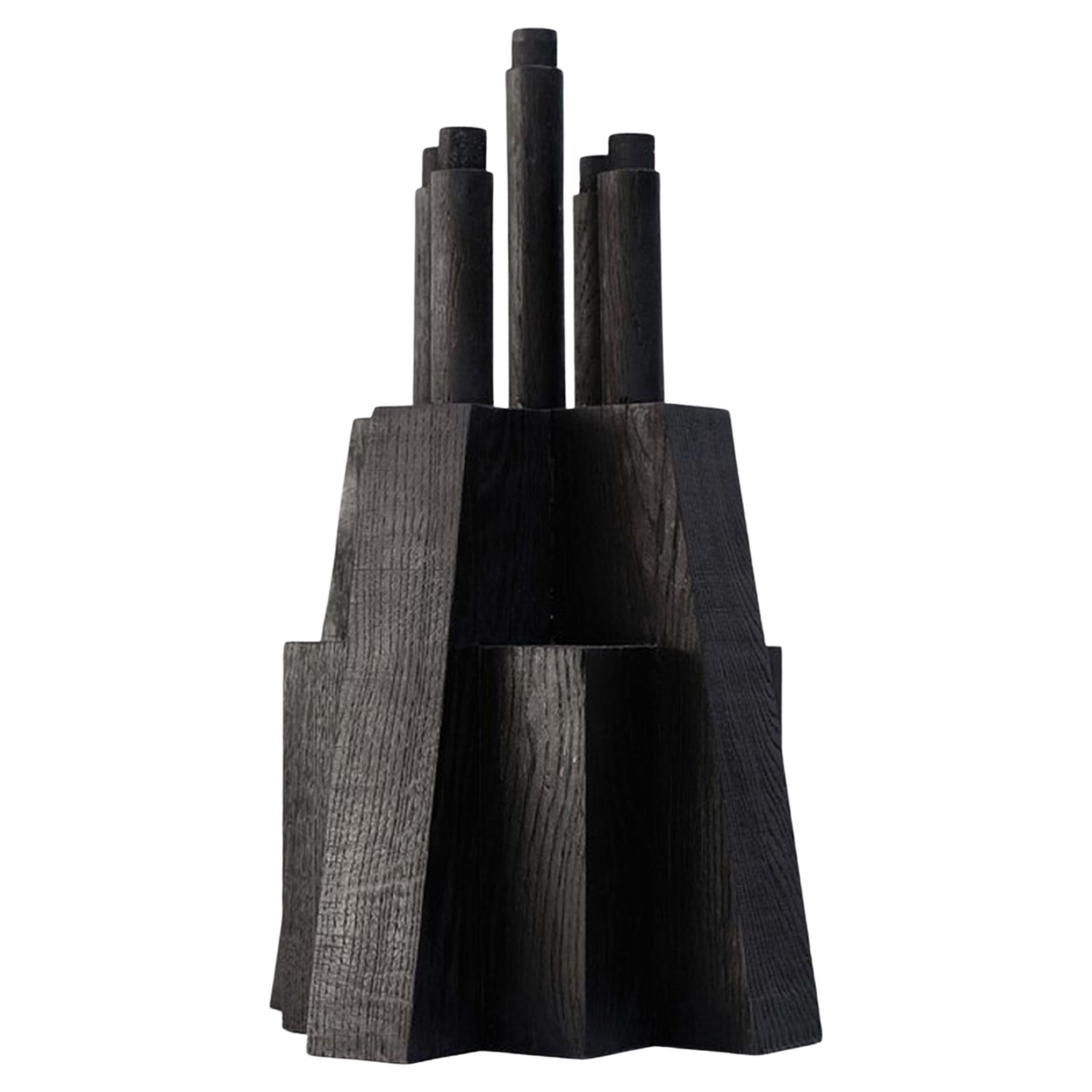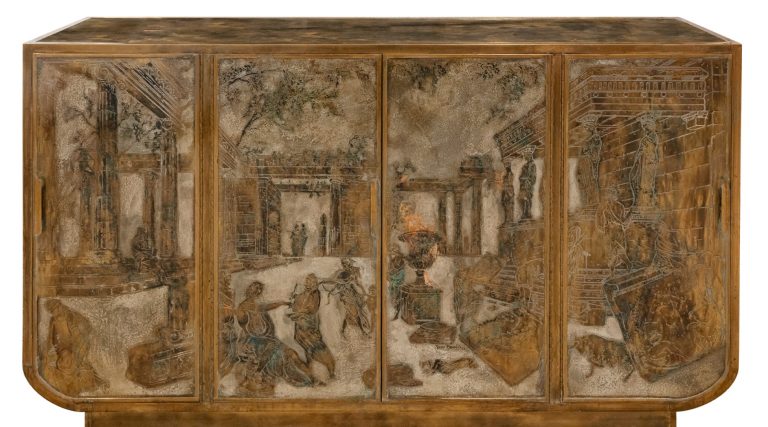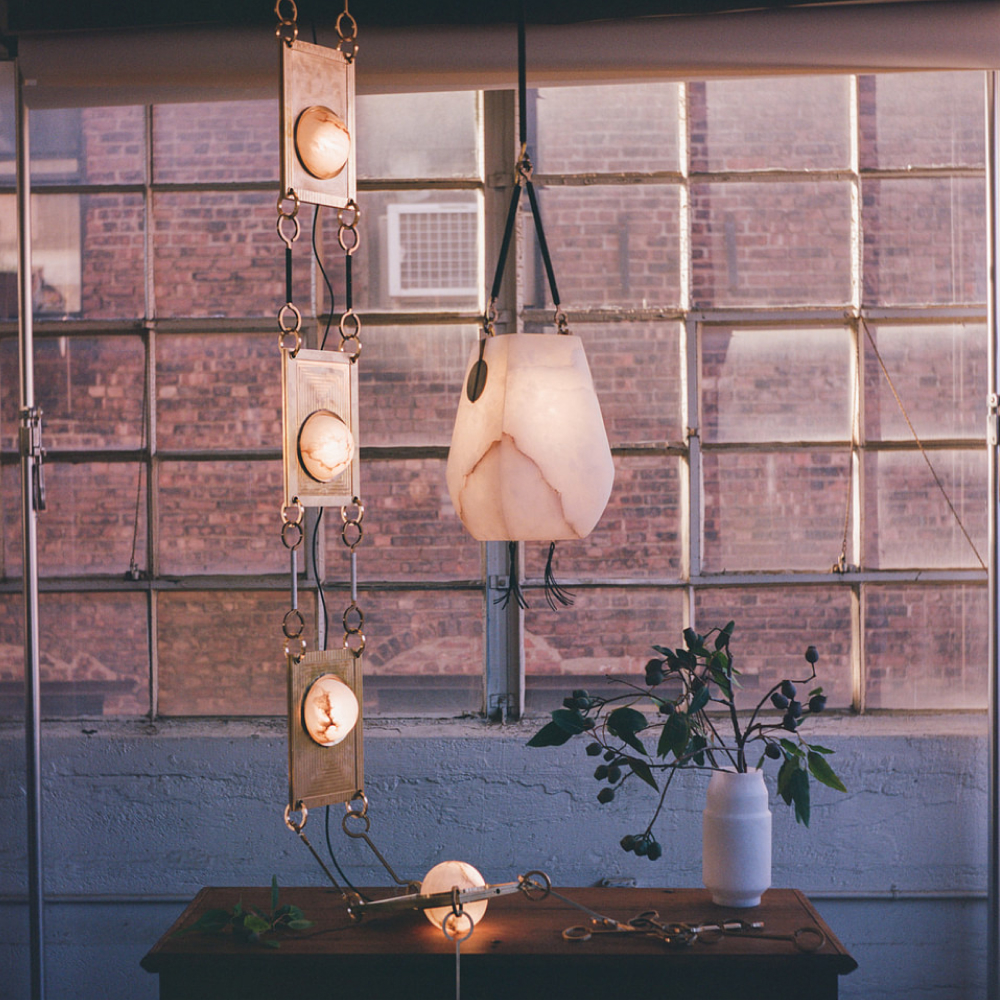December 15, 2024Belgian designer Arno Declercq started making his first pieces — a series of wooden candleholders — in February 2017 on the terrace of his parents’ top-floor apartment in the Flemish city of Leuven. The conditions were spartan. He had a three-foot-long workbench, a handful of simple tools and a large jacket to protect him against the elements. “I also placed a firepit next to me so I had some warmth,” he remembers. “When it started raining, I had to stop.”
A few months later, he borrowed his grandmother’s car to try to sell his wares. “I went door-to-door, from one retail store in Belgium to another,” he says. “And everybody closed the door on me. They said, ‘You have no name’ or ‘We don’t like what you do.’ ”
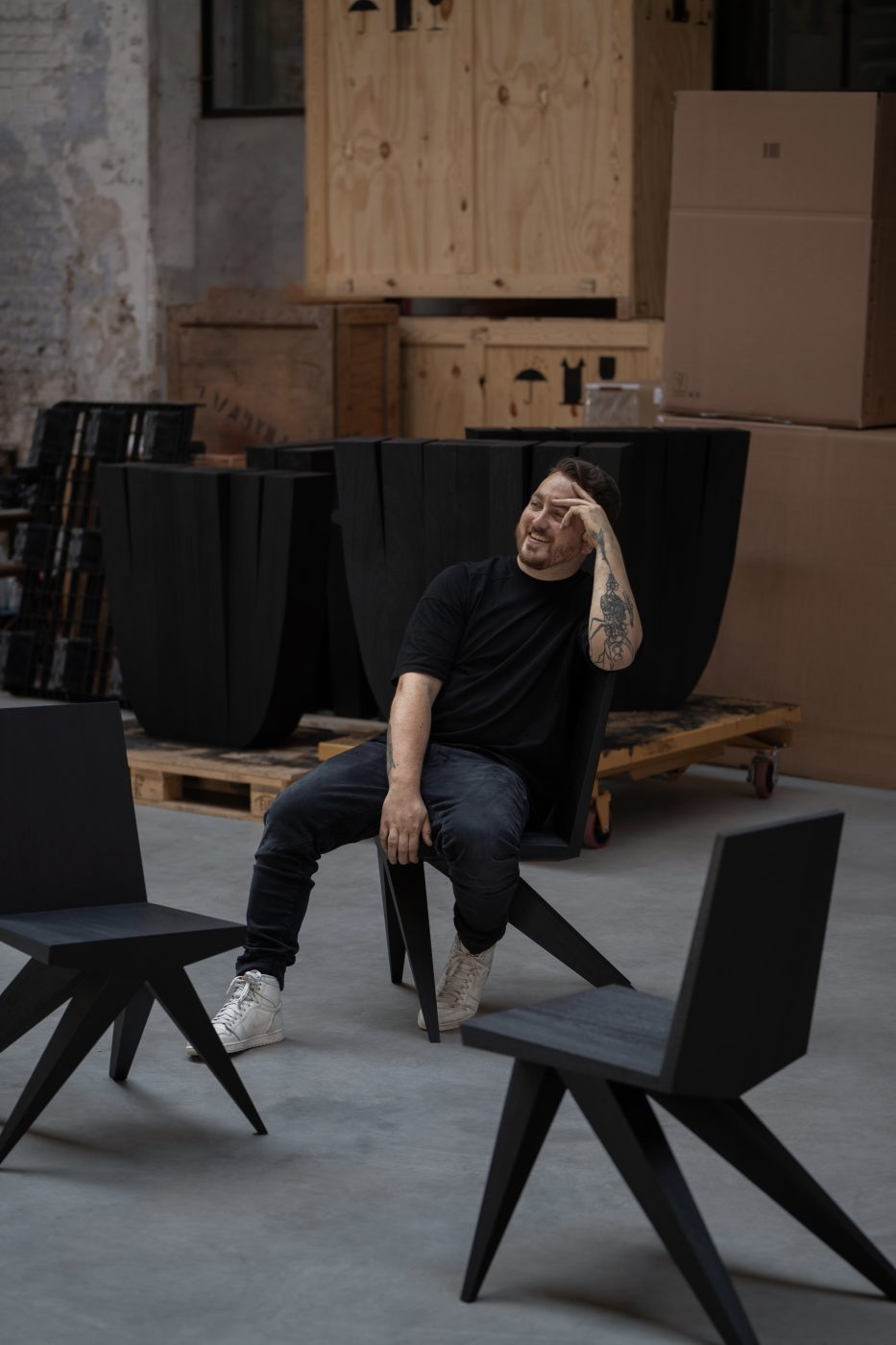
Today, things are rather different. Declercq has amassed a fan base for his furniture designs that includes Peter Marino, Vincent Van Duysen and Jennifer Lopez. He has supplied benches and side tables for the headquarters of Yves Saint Laurent, in Paris, and has been commissioned by Fendi to produce pedestals and tables for its boutiques, as well as a one-off installation for its store in the French ski resort of Courchevel. The piece, which Declercq describes as “a forest of pillars,” consists of a partition made up of three tons of vertical African walnut planks slanted at different angles.
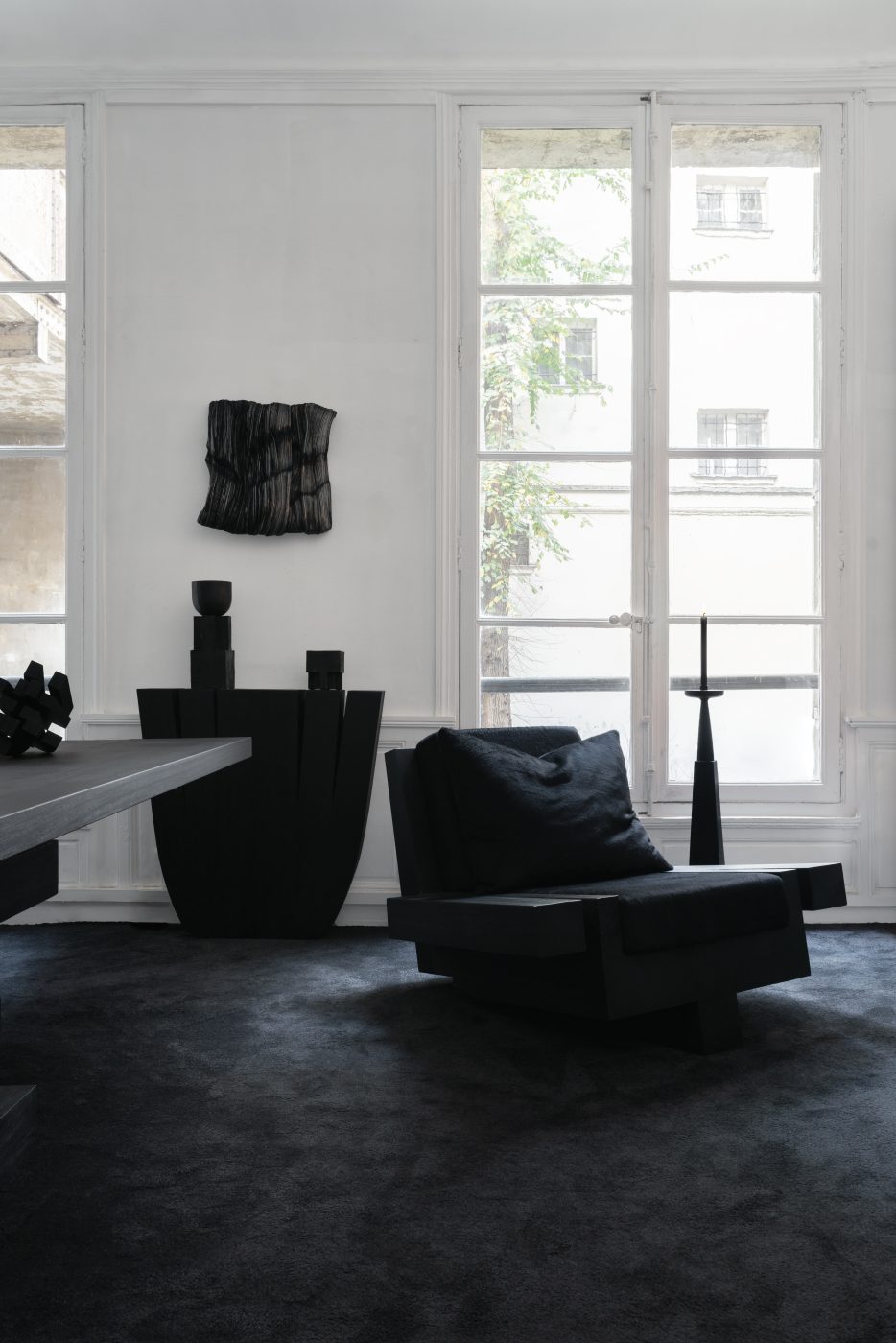
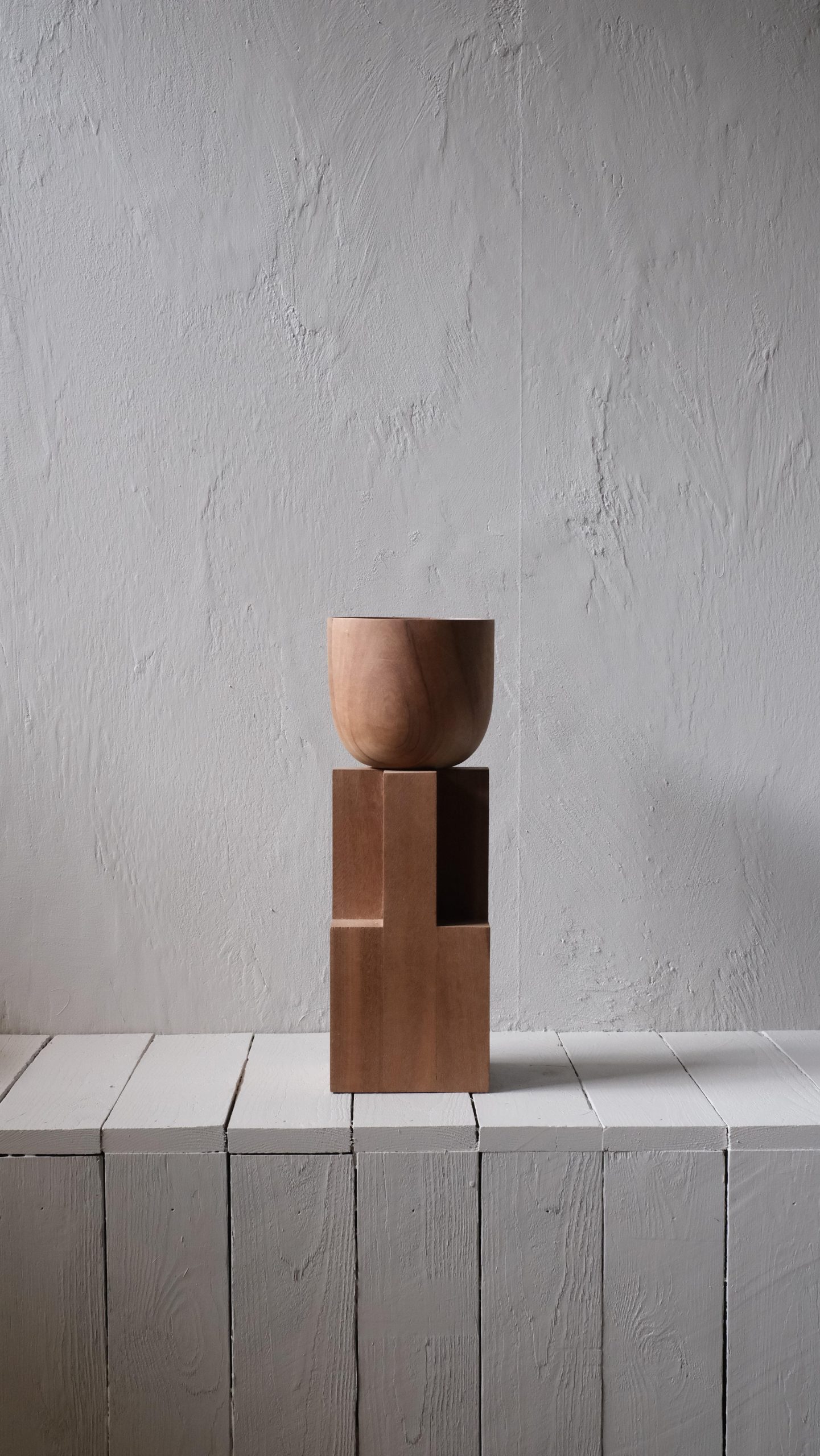
Declercq’s handcrafted furniture and objects are characterized by bold, forceful forms, a monochromatic palette and the use of solid wood, generally oak or iroko. He lists among his inspirations Brancusi and Rick Owens; avows a passion for brutalist architecture, such as bunkers and fortresses; and readily acknowledges an affinity with Japanese aesthetics. The last, he says, is more “by coincidence than purpose.” He has never immersed himself in the country’s culture. Rather, he discovered after the fact that techniques he was using were close to those of traditional Japanese craftsmanship.
The most striking example is his predilection for burning the wood he uses in his creations. The Japanese call the process yakisugi and employ it to protect timber for exterior cladding against bugs and mold. Declercq chars his wood for other reasons. First, he dislikes color and believes that black helps you to focus solely on a piece’s shape. “For me, form and proportion are so important,” he says. “I’ve made pieces in black, and clients have asked if I can redo them in natural oak, and sometimes I really don’t like the result, even though it’s exactly the same form.” Second, he loves the visual effect and soft texture it produces. He didn’t treat the blackened surface at all until his clients alerted him to an unexpected issue. “I got messages saying, ‘Look, my hands are all black! You should maybe put something on it.’” He now applies wax, stain or oil, depending on the item’s function.
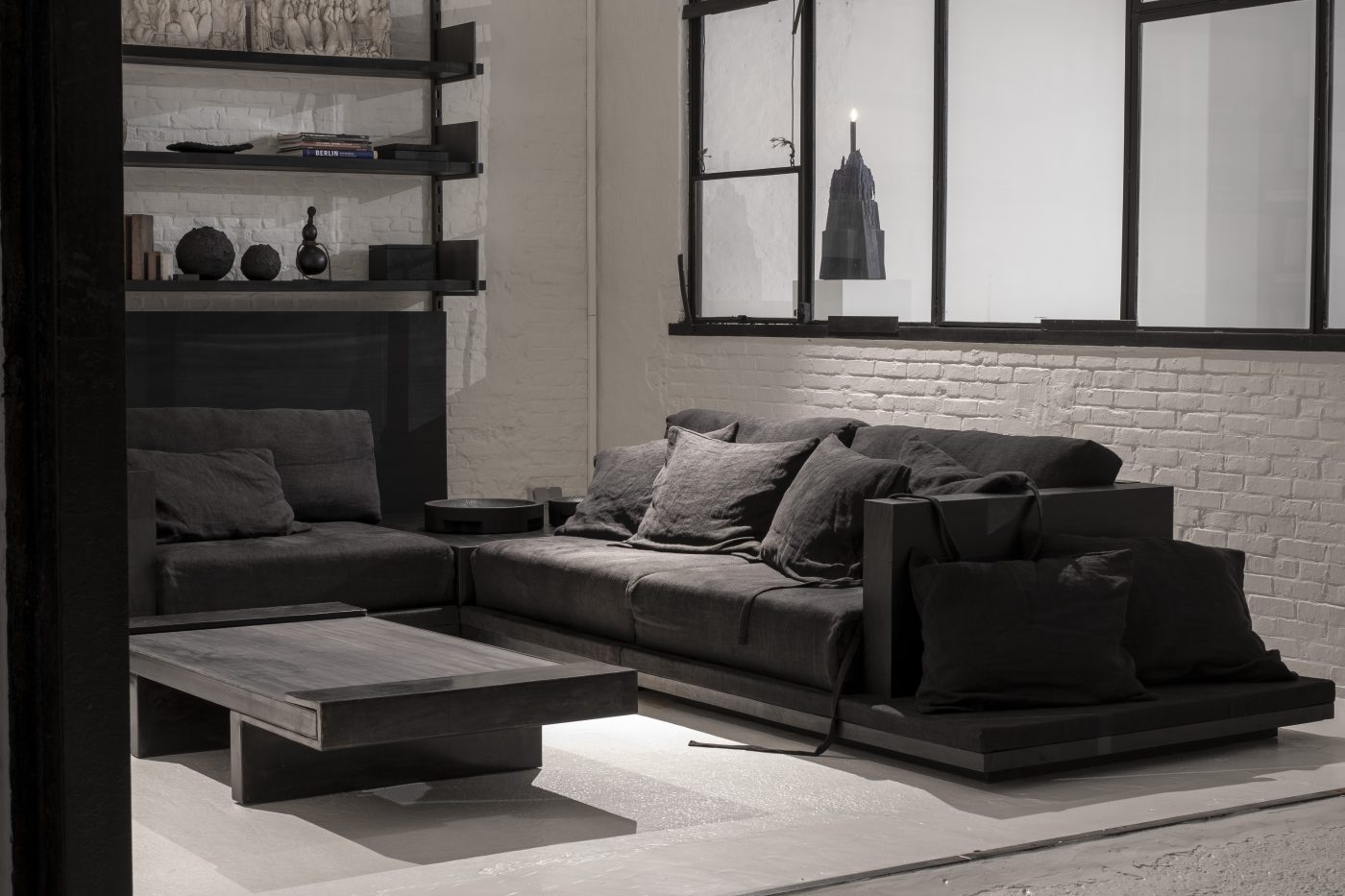
The strongest influence on his work comes from West Africa. His affection for the region is inherited from his father, who has been collecting West African art for the past 20 years. Declercq himself has made five trips there. It was in Benin that he first encountered what has become his main material: iroko wood. “The locals believe the trees are inhabited by their ancestors,” he says. “I find not only that spiritual vision magnificent but also the wood’s dark tone and the durability associated with the fineness of its grain.”
Many of his furniture collections nod in one way or another to the region. One is called Zoumey, the word in a local Beninese language for an iroko forest. The Zoumey dining table is the piece of which Declercq is most proud. Its base comprises some 20 vertical pieces of wood of exactly the same shape, which are assembled without a single screw, connected instead by small wooden joints.
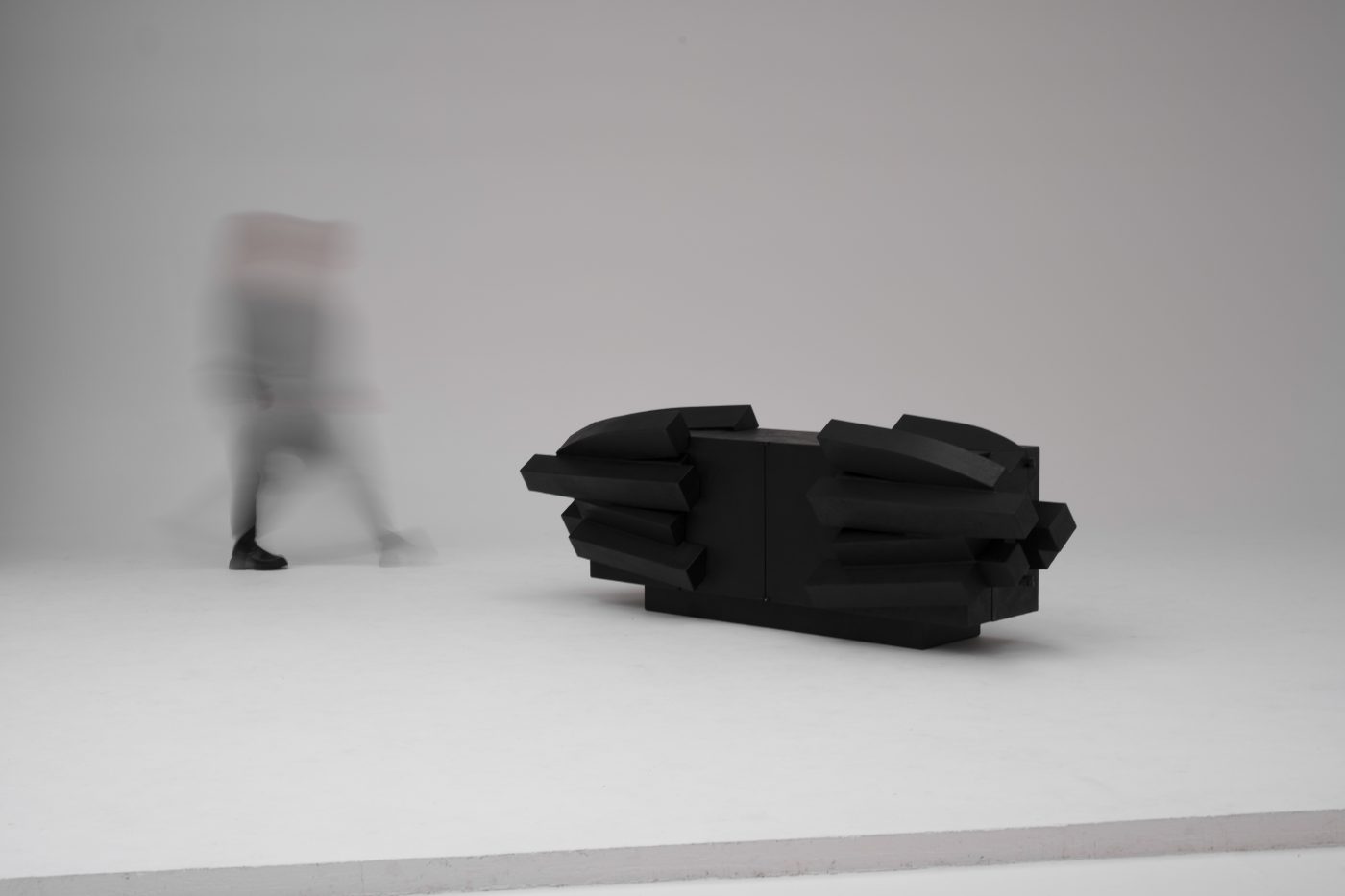
Aside from the Zoumey collection, there’s the Igbo sideboard, consisting of horizontal elements that seem randomly piled on top of one another. It was inspired by immense stacks of harvested wood Declercq witnessed in Togo: In Yoruba, ibi gbigbe igbo means “place of cutting wood” or “logging site.” “You see these old ‘giants’ lying there, and I wanted to create an homage to those trees,” he says. The black oiled-oak piece also marks a departure for him, as it is crafted not solely from wood, as has been the case with all his previous designs, but also from blackened steel.
Declercq was born in Leuven in 1994 into an artistic family. One grandfather was a builder, the other an architect. His father attended the Royal Academy of Fine Arts in Antwerp and worked for several years after graduation for Belgian fashion designer Dirk Bikkembergs. Declercq’s parents ran a successful printing company for most of his childhood, but in 2010, they acquired a clothing store, where they sold brands like Rick Owens, Ann Demeulemeester and Maison Margiela. Declercq’s father now assists his son in the workshop.
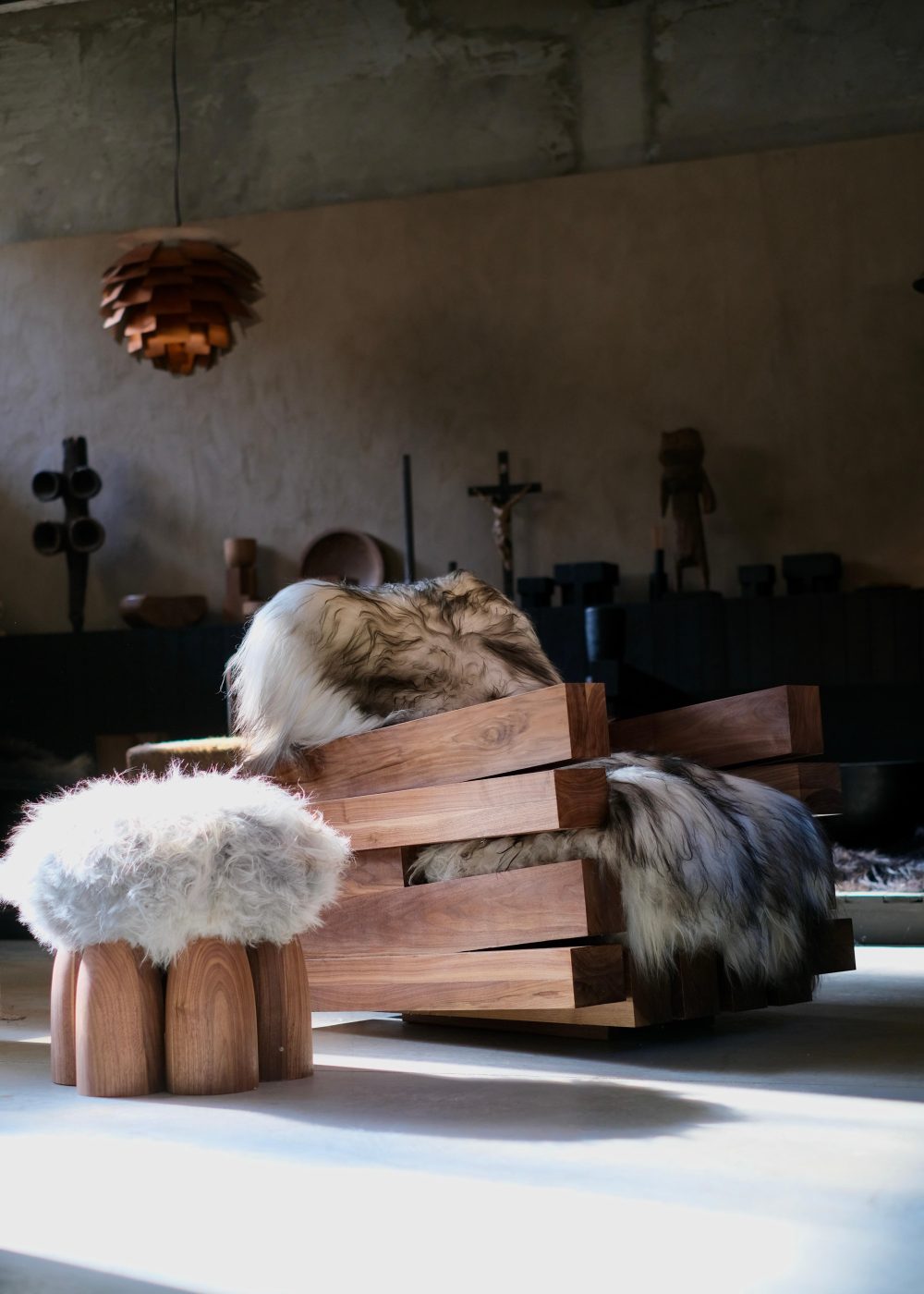
Declercq himself studied interior design at Sint-Lucas School of Arts, in Ghent, but dropped out after a year, realizing that he was unsuited to the Belgian education system. After several months assisting Belgian artist Arne Quinze on a project in Brazil, he opened a short-lived gallery in Leuven, where he sold items from his father’s collection of African art alongside vintage and contemporary furniture. It proved economically unviable and closed after a year.
It was then that Declercq turned to design. After two months working on his parents’ terrace, he set up his first atelier in the garden shed of a family friend. Social media was crucial to his success. He never formally studied woodworking, instead picking up techniques from watching videos on YouTube. And it was thanks to Instagram that he swiftly garnered an avid following for his designs.
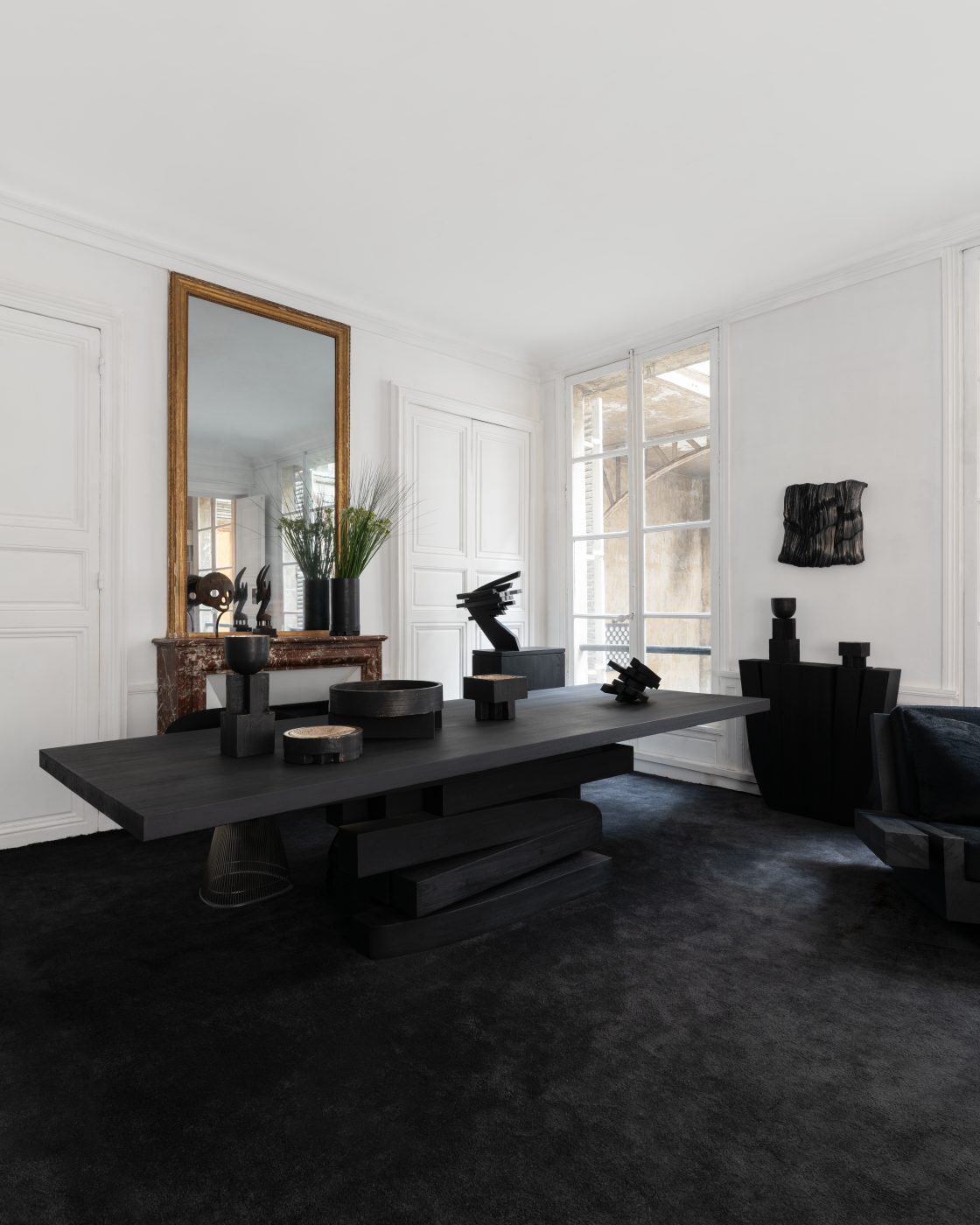
In 2018, he moved to a 60,000-square-foot space at a creative hub on the outskirts of Brussels called Zaventem Ateliers, which is housed in an industrial building dating from around 1780. This November, he also opened a by-appointment-only showroom in the Zurenborg district of Antwerp, where he now spends one day a week. It could hardly be more hidden, tucked behind the redbrick facade of a former garage at the end of a cul-de-sac.
But then, he is so sought-after these days that visibility is hardly an issue. Understandably, some of the Belgian store owners who turned him down in 2017 are now kicking themselves. “It’s kind of funny, because they’re all coming back to me,” he says. “But my goals are now elsewhere.”
